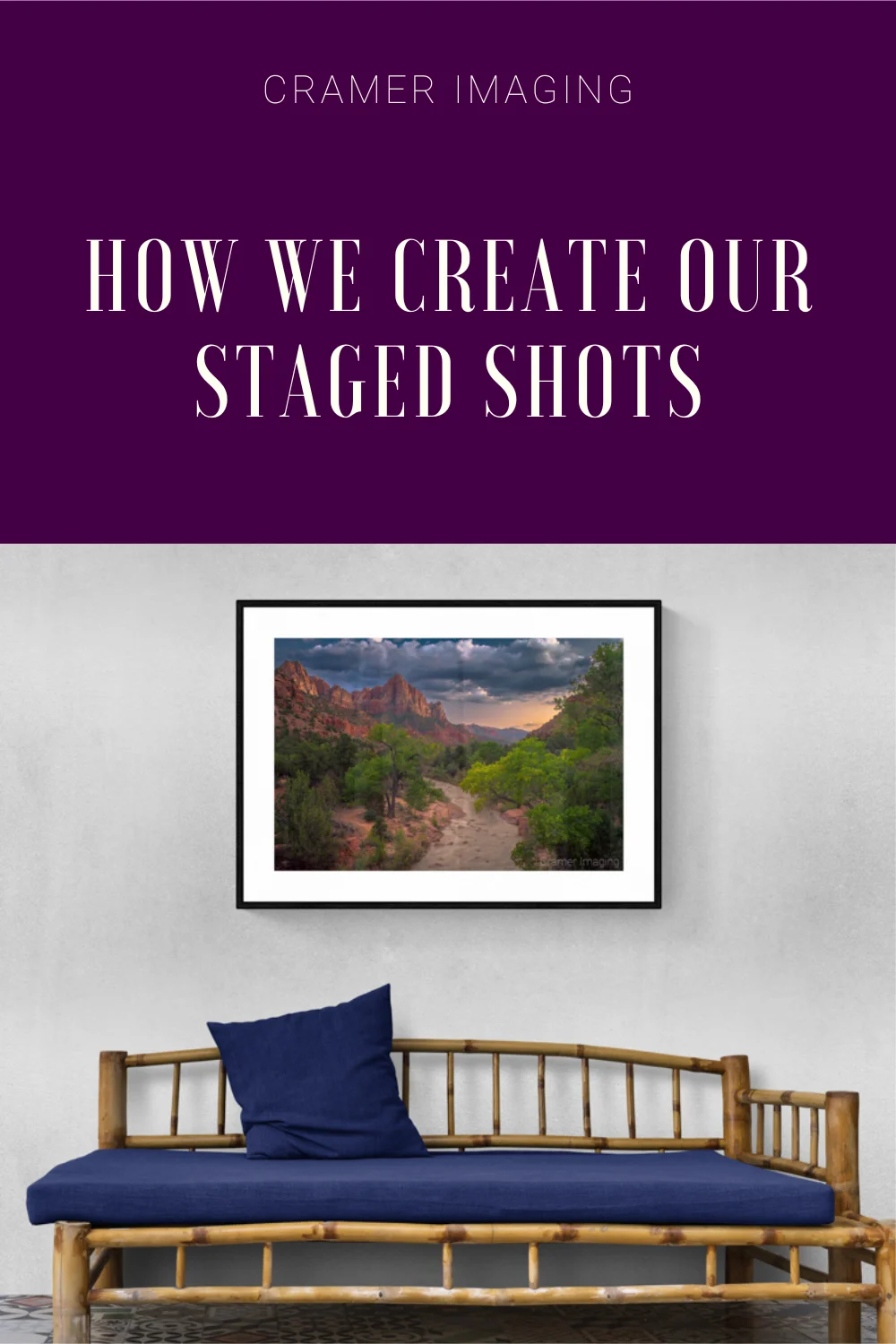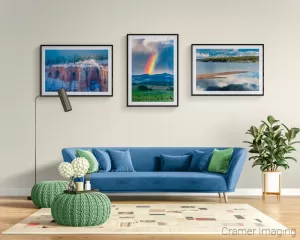
Here at Cramer Imaging, we have several different staged shots which show our photos hanging on the walls of different rooms. We’ve had some questions lately about how we get those pictures. Do we have access to all those different rooms and all that furniture? Did we hire someone to do those photos for us? Today, we’re answering that question.

While it would be nice to create and decorate a room to create a staged shot (like those we use on our website), the reality is that doing so would not only be a lot of work but also be extremely expensive and labor intensive.
I don’t know about you, but interior design is not my forté, unlike landscape photography. I can do well for my own home but I’m not a professional designer by any stretch of the imagination.
There are even complications which might make this process even more difficult and time-consuming such as needing to find a place with a nice window and view.
There are even further considerations as well such as: if we were to use the same room over and over, we would need to get new furniture and re-decorate it again and again to try and make it look fresh every time. However, it would come to look like the same room in all of the staged photos. To do a wide variety of staged shots properly, we would need something like access to 50+ rooms and we would have to continually decorate them so that every aspect was fresh and interesting. That’s both a LOT of work AND extremely expensive.
So what do we do? That’s where the internet and Photoshop really help us out.
For the decorated room to stage my photo in, that’s a really easy solution. We purchase a license to use photos of staged rooms. Other professional photographers take these pictures for the sole purpose licensing them to people like me. I can add my own art to the walls of those pictures. Many of those pictures even have blank frames in place specifically for this purpose. I simply edit the photo and digitally add my own picture into the blank frame as intended.
Now, adding my picture into another’s picture and making it look natural, and not photoshopped in, isn’t easy. I can’t just copy and paste the photo, maybe moving it around or resizing it, and call it good. My image has to be distorted and skewed appropriately so that it matches the parallax of the frame in the photo. My photo’s colors also have to be adjusted a little to match the lighting and so that it looks like a framed photo, behind glass, hanging on a wall, and not a photoshopped monstrosity. With proper photoshopping skill and attention, the photo composite will stand up to casual and even intense scrutiny.
That’s really about it. Now, I could go into some of the more technical details of skewing and making the photo look like it’s behind glass, but most of that explanation covers pretty standard photoshop skills and beyond the scope of this article. Our staged shots show what our photography looks like in otherwise fully decorated rooms. Using the stock photo option, we can show you exactly what you want to see but we don’t have to create a fully decorated room to do so.


Receive monthly updates in your inbox from us.

Join our email-only photo of the week club to get the full stories behind how we captured our favorite fine art landscape photos.
We respect your privacy
No More Results
Powered by atecplugins.com